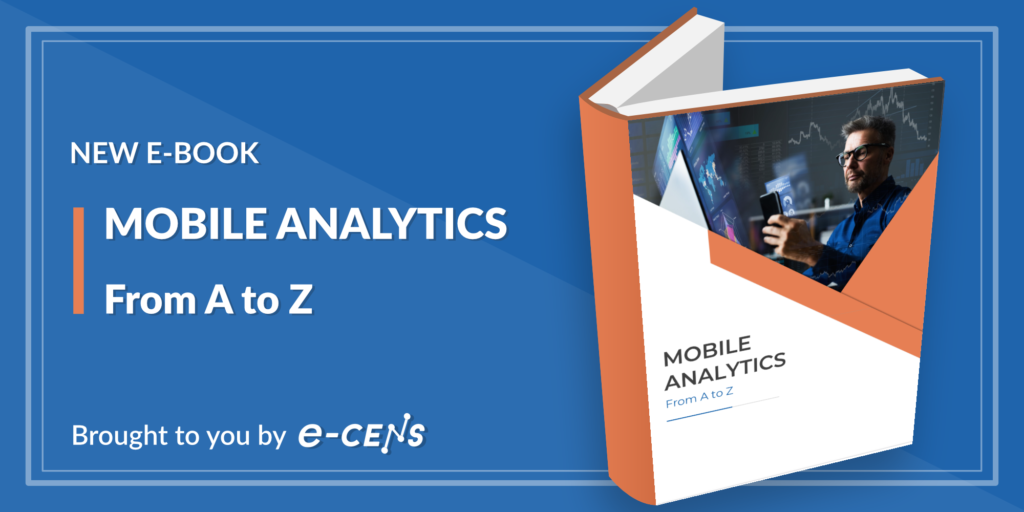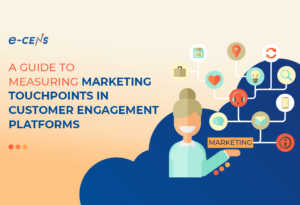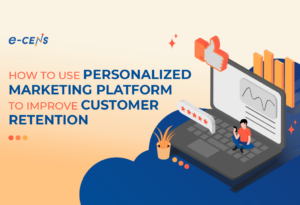The Mobile customer journey is an integral part of your customers’ experience. And, with customer experience continuing to reign as a key competitive differentiator and revenue accelerator, “How well do you understand your users?” is a question companies should ask themselves more frequently – and with more urgency.
To learn how a consumer builds their relationship with a brand, from first discovery to loyal customer, marketing experts swear by customer journey maps. Known also as the buyer journey or user journey, these visual representations of how users come to your app through various touchpoints are vital for improving your customer experience.
To develop a Mobile customer journey map as accurately as possible, we believe Mobile Analytics tools should be an indispensable part of the process. Read on to learn why.
Table of Contents
Understand Your Mobile Customer Journey: What You Need to Know
Considering that 71% of Americans check their phone within the first ten minutes of waking up, it is clear that smartphones have revolutionized the average mobile customer journey.
The widespread use of mobile phones has both significantly shortened customer journeys and made them much more dynamic. However, the Mobile App is only part of the standard customer journey, which is now an omnichannel experience. Consumers interact with a brand through a multitude of touchpoints coming from a variety of different devices.
Each of these channels comes with its own set of metrics to track. For example, Mobile customer journeys present an entirely different challenge to map as opposed to the desktop-based process of discovery and conversion. The standard methods for tracking attribution, such as cookies, image pixel tags, and tracker links, can’t be applied to mobile-first shoppers. Instead, Mobile Attribution relies upon unique device identifiers to pinpoint individual users and map out their journey to your product.
To ease this painstaking process of audience segmentation and customer journey mapping, companies have been increasingly turning to Mobile Analytics tools such as Firebase, Mixpanel, and Adjust for help.
How Mobile customer journey mapping can unlock new insights for your company
When well applied, Mobile customer journey analytics can provide you with the crucial information you need to improve your customers’ experience at each step of their journey. Providing a satisfying and engaging journey to your audience, in turn, can significantly improve conversion rates.
Let’s take a look at how Mobile App analytics can be used to identify issues and improve your overall impression at each step of your users’ journey.

1. Awareness
The customer journey begins the moment a consumer becomes aware of your product.
However, standing out from over 2.87 million Android and 1.96 million iOS apps is no easy task – which is why it is important to make an exceptional first impression.
To build awareness, you can start by looking at simple, broad metrics such as your audience demographics data. Once you’ve acquainted yourself with some key audience stats – age, location – you can begin discussing which marketing channel would work best for their tastes. For some, it’s YouTube pre-rolls; for others, it can be in-app ads, a strong social media presence, or even influencer marketing. The possibilities are endless – that’s why having a firm grasp on the basic habits and interests of your audience is a necessary starting point.
Once you have your starter strategy in place, attribution tools such as Adjust will reveal which channels are your top performers. This insight is crucial for fine-tuning marketing efforts and increasing ROI – you can pay more attention and invest more in the campaigns that have brought you the highest number of downloads and active users, and drop or tweak the campaigns that underperform.
2. Engagement
You’ve now optimized your outreach efforts – more and more people are clicking on your ads, download rates are up, and average session times might be longer. However, this does not mean your users are ready to use your app to its full extent, i.e., convert fully. If you are an e-commerce retailer, you might already be familiar with this particular issue.
Digital window shopping is incredibly widespread – recent reports state that 54% of consumers enjoy browsing online more than in-store visits. And, casual users outnumber customers not just in e-retail but in any industry; think of mobile gamers who avoid in-app purchases, real estate apps used as vision boards, and the number of news app installs that never result in a subscription.
To know how to engage your users on a deeper level, it pays to take a look at your engagement metrics – such as average session lengths and exit rates. Exit rates, in particular, will show you which screens are your userbase’s most common exit points. Tweaking your design or message even slightly could do wonders for conversion.
3. Consideration
While some customers are strongly considering purchasing a product at this point, many need additional information before completing their transaction. This is the point where direct communication is key.
Options provided by Mixpanel or Firebase, such as in-app messaging or push notifications, provide you with automated touchpoints. These notifications can be tailored based on user behavior to deliver just the right nudge at just the right time – and help a user reach a decision.
4. Conversion
The efforts of optimizing your Mobile customer journey are rewarded once users reach the conversion point. At this stage, your primary responsibility is to provide a frictionless execution of the transaction. Still, this might not be as easy as it seems. According to Sleeknote, the average cart abandonment rate is 69.57%, with a complex checkout process cited as one of the top reasons why.
Regularly check in on your exit rates. If your transaction-related pages have the highest exit volume across your app, it may be time to rethink your checkout process and simplify that design.
If your conversion rates are satisfactory, but you want to increase revenue, consider tracking Average Order Value (AOV). Knowing your AOV will not only allow you to measure your app’s performance against the market average, but it should also influence key decisions such as pricing plans and marketing strategies.
5. Retention
Customer journey mapping does not end with downloads or in-app purchases. Once you’ve built a healthy, active userbase, your goal should be to keep the relationship between your brand and your customers as engaging as possible.
Improving your users’ in-app experience is a process that should be heavily informed by many different metrics: load times, latency, crash rates, average session lengths, number of screens per visit, stickiness, and so many more.
We know that retaining users is one of the largest challenges in today’s app economy. But, with the help of select analytics tools, previously hard-to-access mobile customer journey metrics become actionable insights – empowering you to do what is necessary to always have your users coming back for more.
Mapping Your Mobile Customer Journey is the First Step to Achieving Your Targets
It cannot be overstated how much business growth depends on understanding your customers’ needs. And without the Mobile Analytics tools in the market today, it would be incredibly challenging to analyze and optimize your audience’s mobile customer journey.
From the moment they become aware of your product to the moment they stop using it, consumers are actively nurturing a relationship with your brand, dedicating their time, and giving you their trust. Each step of their journey carries with it different needs that must be addressed. For an improved ROI and continued growth, it is crucial to make sure your audience’s expectations are always well-met.
Here at e-CENS, we are not impartial observers of the Mobile Analytics market. Our subject specialists offer expertise in selecting and tailoring Mobile Analytics solutions to the needs of your organization.
If you want to learn more about which Mobile Analytics toolstack would provide the most value to your unique needs, contact us.
The essential guide to Mobile Analytics: eBook

Get the most out of mobile analytics with e-CENS’s essential guide on their most crucial benefit in today’s app-based market economy: instant insight into your App’s performance.




